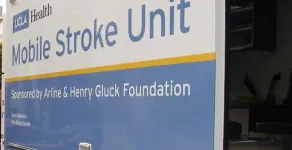New study reveals habitat that could increase jaguar numbers
2021-03-17
(Press-News.org) Tucson, Ariz. (March 16, 2021) - This week, a new, peer-reviewed scientific study finds that there is far more potential jaguar habitat in the U.S. than was previously thought. Scientists identified an area of more than 20 million acres that could support jaguars in the U.S., 27 times the size of designated critical habitat.
The results, published in the journal Oryx, are based on a review of 12 habitat models for jaguars within Arizona and New Mexico, conclusively identifying areas suitable for the recovery of these wild cats. Based on the expanded habitat area, the authors conclude that findings uncover new opportunities for jaguar conservation in North America that could address threats from habitat loss, climate change, and border infrastructure.
Bryan Bird, Director for Southwest Programs at Defenders of Wildlife and one of the study's co-authors, issued this statement:
"This fresh look at jaguar habitat in the U.S. identifies a much larger area that could support many more of these big cats. This expanded area of the Southwest is 27 times larger than the current designated critical habitat. We hope these findings will inspire renewed cooperation and result in more resident jaguars in the U.S."
INFORMATION:
Background
This study was an effort from a multidisciplinary team of scientists drawing from a wealth of expertise in jaguar ecology, including members of the team that worked on the original habitat analysis for the US Fish and Wildlife Service's (FWS) jaguar recovery plan.
In this study, co-authors took the model previously developed as part of FWS' endangered jaguar recovery plan process, and applied it to all of Arizona and New Mexico, including new habitat area that was not considered in the recovery plan. Using this FWS model and additional habitat models previously done by others, the co-authors determined an area of habitat approximately the size of Rhode Island in the central mountains of Arizona and New Mexico that was not considered by the FWS in its recovery planning. The authors titled the area the "Central Arizona/New Mexico Recovery Area" (CANRA).
According to the paper, extending the area of consideration for restoration to include the CANRA and other previously overlooked smaller areas substantially raised the carrying capacity in Arizona and New Mexico, from six to as many as 151 adult jaguars, using modified models from the U.S. Fish and Wildlife Service (FWS).
This area of habitat was not considered in the jaguar recovery plan developed by FWS, released in 2019. After 50 years of discussion among FWS and state agencies about whether jaguars were part of the U.S. fauna and their management, jaguars are now federally protected as an endangered species across their range (including the U.S.), and are protected at the state level in Arizona and New Mexico.
Jaguars are usually associated with tropical habitats such as the Amazon and Central America, but historically were found as far north as the Grand Canyon. The last jaguar north of the Interstate-10 highway in Arizona was killed by a U.S. government hunter in 1964. Over the last two decades a number of male jaguars have been photographed in the mountains south of I-10 and most recently in January 2021.
Far removed from the border, the CANRA area of habitat offers new opportunities for the U.S. to contribute to the recovery of these wild cats. The expanded area identified by the co-authors includes federal, state, tribal and private lands requiring support and cooperation from all landowners. This information does not assume that jaguars would be restored on lands without landowner cooperation.
An interactive map of historical jaguar observations in the U.S. and northern Mexico is available to the public at jaguardata.info
ELSE PRESS RELEASES FROM THIS DATE:
2021-03-17
Researchers have channeled the universe's earliest light - a relic of the universe's formation known as the cosmic microwave background (CMB) - to solve a missing-matter mystery and learn new things about galaxy formation. Their work could also help us to better understand dark energy and test Einstein's theory of general relativity by providing new details about the rate at which galaxies are moving toward us or away from us.
Invisible dark matter and dark energy account for about 95% of the universe's total mass and energy, and the majority of the 5% that is considered ordinary matter is also largely unseen, such as the gases at the outskirts of galaxies that comprise their so-called halos.
Most ...
2021-03-17
Imagine not a white, but a green Arctic, with woody shrubs as far north as the Canadian coast of the Arctic Ocean. This is what the northernmost region of North America looked like about 125,000 years ago, during the last interglacial period, finds new research from the University of Colorado Boulder.
Researchers analyzed plant DNA more than 100,000 years old retrieved from lake sediment in the Arctic (the oldest DNA in lake sediment analyzed in a publication to date) and found evidence of a shrub native to northern Canadian ecosystems 250 miles (400 km) farther north than its current range.
As the Arctic warms much ...
2021-03-17
An estimated 14,480 new cases of invasive cervical cancer will be diagnosed in the United States this year, according to the American Cancer Society. Cases that could be prevented or cured with better education from screening to treatment based on improved provider-patient communication, says a Michigan State University researcher.
The issue is particularly acute for Black women, said Sabrina Ford, an associate professor in the Department of Obstetrics, Gynecology and Reproductive Biology within MSU's College of Human Medicine. Ford's research was published ...
2021-03-17
Artificial light at night (ALAN) is a major factor in global insect decline. In a paper published today in Insect Conservation and Diversity, Smithsonian Conservation Biology Institute (SCBI) scientists and partners found that using amber-colored filters to remove the blue spectra of light from "warm white" LED (light-emitting diode) lamps drastically reduces insect attraction to nocturnal lighting in a tropical forest. This is the first study to validate quantitative predictions of how lamp color affects insect attraction and provide clear recommendations to mitigate the negative impacts of ALAN on wildlife in rainforest ecosystems.
"While ...
2021-03-17
Many bacteria swim towards nutrients by rotating the helix-shaped flagella attached to their bodies. As they move, the cells can either 'run' in a straight line, or 'tumble' by varying the rotational directions of their flagella, causing their paths to randomly change course. Through a process named 'chemotaxis,' bacteria can decrease their rate of tumbling at higher concentrations of nutrients, while maintaining their swimming speeds. In more hospitable environments like the gut, this helps them to seek out nutrients more easily. However, in more nutrient-sparse ...
2021-03-17
A new study involving UCLA researchers finds that mobile stroke units (MSUs) - state-of-the-art ambulances built to provide stroke patients with emergency neurological diagnosis and treatment prior to hospital arrival -- improve patient outcomes and lessen the chance for disability by delivering care faster than standard stroke care.
The UCLA Mobile Stroke Unit serves as a shared regional resource of LA County EMS Provider Agencies, taking patients to 15 different stroke center hospitals within 3 regions in Los Angeles County. The MSU carries a CT scanner that can directly image the brain and blood vessels in the field. UCLA was one of seven national mobile stroke unit programs to participate in the clinical trial, which was presented March 17 at the ...
2021-03-17
Water is an ephemeral thing. It can emerge from an isolated spring, as if by magic, to birth a babbling brook. It can also course through a mighty river, seeping into the soil until all that remains downstream is a shady arroyo, the nearby trees offering the only hint of where the water has gone.
The interplay between surface water and groundwater is often overlooked by those who use this vital resource due to the difficulty of studying it. Assistant professors Scott Jasechko and Debra Perrone, of UC Santa Barbara, and their colleagues leveraged their enormous ...
2021-03-17
George Washington University researchers found low dose aspirin may reduce the need for mechanical ventilation, ICU admission and in-hospital mortality in hospitalized COVID-19 patients. Final results indicating the lung protective effects of aspirin were published today in Anesthesia & Analgesia.
"As we learned about the connection between blood clots and COVID-19, we knew that aspirin - used to prevent stroke and heart attack - could be important for COVID-19 patients," Jonathan Chow, MD, assistant professor of anesthesiology and critical care medicine and director of the Critical Care Anesthesiology ...
2021-03-17
A recent study shows that lettuce can be grown in greenhouses that filter out wavelengths of light used to generate solar power, demonstrating the feasibility of using see-through solar panels in greenhouses to generate electricity.
"We were a little surprised - there was no real reduction in plant growth or health," says Heike Sederoff, co-corresponding author of the study and a professor of plant biology at North Carolina State University. "It means the idea of integrating transparent solar cells into greenhouses can be done."
Because plants do not use all of the wavelengths of light for photosynthesis, researchers have explored the idea of creating semi-transparent organic solar ...
2021-03-17
AUSTRALIAN - LED INTERNATIONAL RESEARCH TEAM GENERATES THE FIRST MODEL OF EARLY HUMAN EMBRYOS FROM SKIN CELLS
In a discovery that will revolutionize research into the causes of early miscarriage, infertility and the study of early human development - an international team of scientists led by Monash University in Melbourne, Australia has generated a model of a human embryo from skin cells.
The team, led by Professor Jose Polo, has successfully reprogrammed these fibroblasts or skin cells into a 3-dimensional cellular structure that is morphologically and molecularly similar to human blastocysts. Called iBlastoids, these can be used to model the biology of ...
LAST 30 PRESS RELEASES:
[Press-News.org] New study reveals habitat that could increase jaguar numbers





